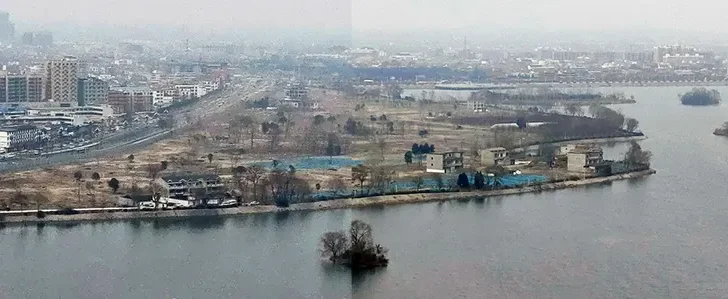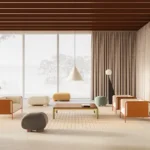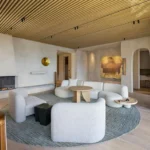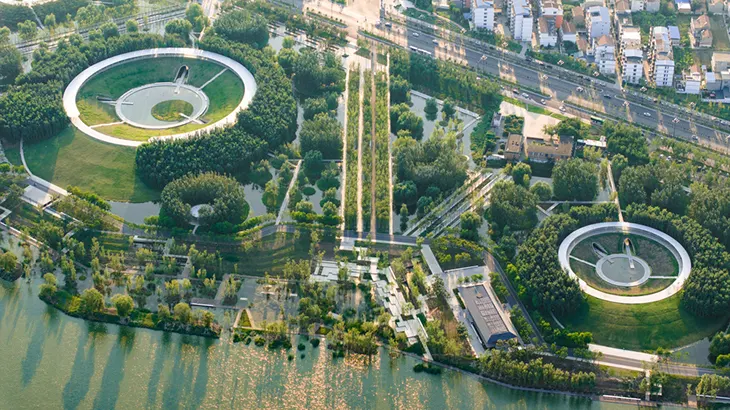
Located in Henan Province, China, the Huaiyang Fuxi Cultural Park by Turenscape redefines what it means to design a public space rooted in cultural identity and environmental necessity. The 43-hectare site, once strained by urban sprawl and flood risks, has been transformed into a multifunctional landscape that draws upon ancient cosmology and modern sponge city principles. The park not only serves as a flood-resilient buffer for Huaiyang but also resurrects the mythology of Fuxi, the legendary inventor of the Eight Trigrams (Bagua), through form, vegetation, and spatial choreography.
LANDSCAPE
The design emerges from centuries of interaction between Huaiyang’s people and the Yellow River’s rhythms. Historically, Dragon Lake absorbed the seasonal excesses of the river, but contemporary development diminished its capacity. The park reclaims this hydrological space and reframes it as an ecological and civic asset. Beyond engineering, it reawakens a historical continuum stretching back to the time of Fuxi, some 6,500 years ago. The project functions simultaneously as a flood mitigation tool, urban oasis, and a repository for intangible heritage.
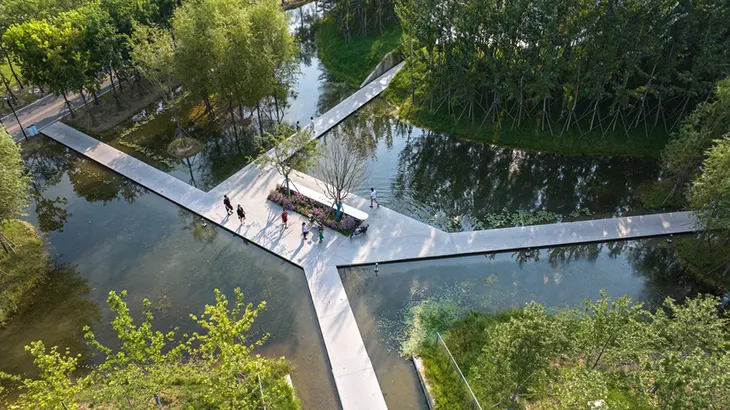
At the core of the design is a crater-based island system, sculpted from 860,000 cubic meters of recycled earth. These crater-shaped islands reinterpret the cosmic motifs found in Chinese star maps and Bagua configurations. Each of the 27 main islands is programmed for diverse public uses, ranging from playgrounds and amphitheaters to contemplative water gardens and site-specific art installations. The result is a matrix of unique micro-environments linked by narrative and form.
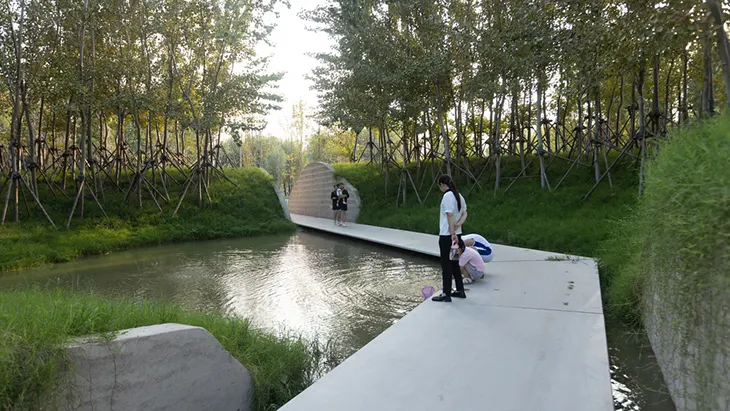
True to the principles of sponge city design, the park’s topography and vegetation regulate over 1 million cubic meters of stormwater. Flood-tolerant native flora, particularly willows and poplars drawn from The Book of Songs, root the park in regional memory while ensuring year-round resilience. A bio-filtration system, supported by solar-powered infrastructure, treats approximately 11,500 tons of water daily, cleansing runoff from both the city and lake before returning it to the ecosystem. This infrastructure is subtly embedded into the site’s design, its efficiency concealed within the poetic logic of the park’s plan.
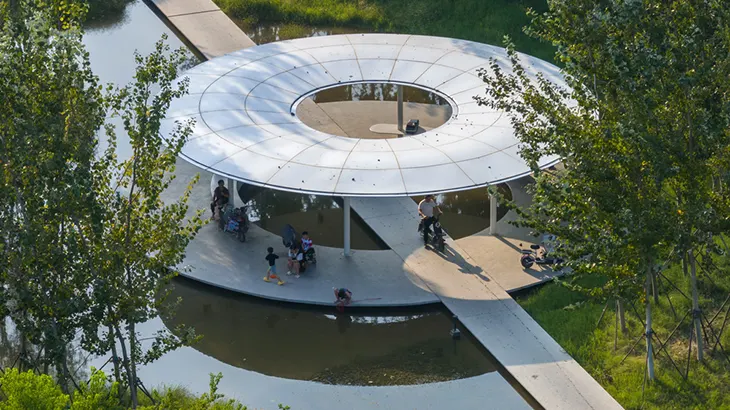
Visitors traverse the site via a system of gently winding boardwalks that hover over shallow waters and tunnel through crater gardens. These walkways allow immersion in the landscape while adhering to safety standards that eliminate the need for handrails. Seasonal change is not merely accommodated but celebrated, craters become skating rinks in winter, and open lawns double as slopes for skiing, offering new ways to inhabit and animate public space throughout the year.
The integration of cultural elements extends beyond form into material and botanical selection. The design team sourced inspiration from regional songs and mythologies, ensuring that even the planting schemes, dense with poetic references, contribute to the site’s narrative cohesion. Collaborations between cultural historians, ecologists, and artists have resulted in a park that feels simultaneously ancient and new.
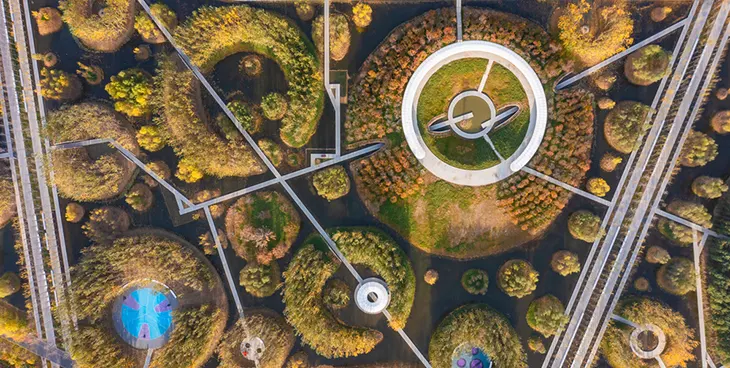
In its embrace of adaptive reuse, cultural memory, and ecological intelligence, the Huaiyang Fuxi Cultural Park offers a compelling template for future landscape architecture. Turenscape demonstrates how infrastructure can operate beyond utility, as an artwork, a myth retold, and a sanctuary for both people and planet.
